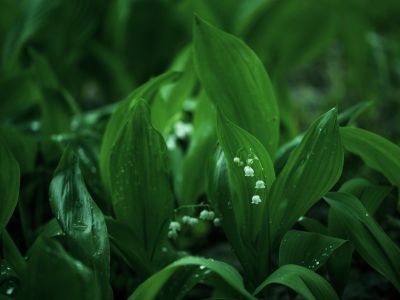Growing Bulbs in Shade
Shade gardens in the yard generally fall into two categories: gardens next to buildings and gardens underneath trees. Each has its own particular set of issues to deal with. Bulbs planted next to buildings may suffer from lack of moisture due to overhanging roofs and patio awnings. These gardens may need extra watering, as nature isn’t as likely to provide all the moisture they need. Gardens underneath trees pose their own challenges. Tree roots are often very hungry for moisture and nutrients and can take most of this away from smaller bulbs in the area. Extra watering and feeding should be scheduled on a monthly basis. The space underneath a deciduous tree will have varying shade amounts, depending on the time of year. You may get away with planting bulbs that need only partial sun if they bloom very early in the year before leaves fill out, but later plantings should grow flower bulbs in shade without any direct sunlight.
Spring and Summer Bulbs for Shade Gardening
Spring bulbs for shade are generally planted in the fall and allowed to hibernate underground until they sprout in the spring. Most of these flowers are delicate looking, giving a subtle view of things to come later in the year. Some favorites are lily of the valley, English bluebell and snowdrop. Summer bulbs for shade tend to be larger and showier and can be planted early in the springtime. Tuberous begonias are bright showstoppers that thrive in the shade, while large caladium leaves can be solid green or have a variety of colored stripes and mottled spots in bright reds and yellows. Bulbs for dry shade can pose additional challenges, as many shady spots don’t have the evaporation rate that sunny places do. Choose bulbs that thrive in dry shade such as lovely little snowdrops, English bluebells and anemone or windflower.
